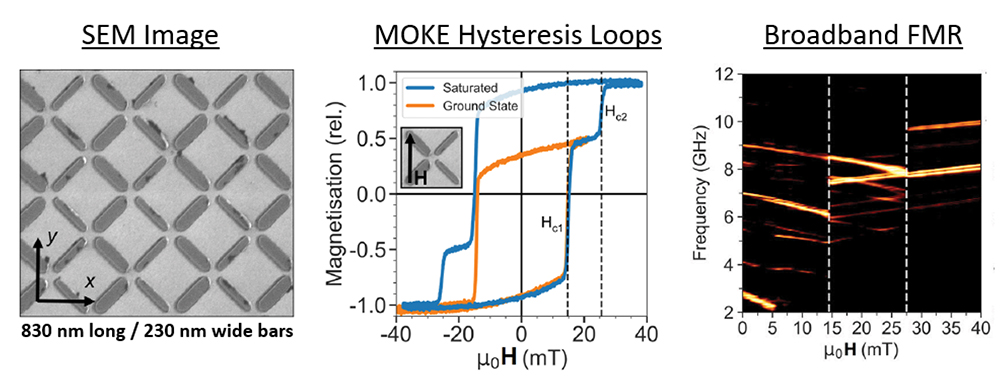A comprehensive study of an artificial spin ice using CryoFMR and NanoMOKE
Researchers at the Imperial College London who work with magnonics have done comprehensive studies on artificial spin ice. To do this they used the CryoFMR and NanoMOKE from our partners NanOsc Instruments and Durham Magneto-Optics [1].
Magnonic materials are considered to use spin-waves to propagate and process information. Spin-waves offer a range of benefits as data carriers: Low heat generation, power consumption and coherent coupling to photons, phonons and other magnons. Applications are transistors, multiplexers, and logic gates. Ferromagnetic resonance spectra were measured using a NanOsc Instruments CryoFMR in a Quantum Design Physical Properties Measurement System.
MOKE-measurements were performed on a Durham Magneto-Optics NanoMOKE-system. The laser spot was approximately 20 μm in diameter.
Some examples are given in the pictures. SEM image (on the left) shows the sample structure. The longitudinal Kerr signal was normalized and is depicted in the middle. The linear background was subtracted from the saturated magnetization. The measured Kerr signal was averaged over 300 field loops to improve signal to noise. The FMR spectra (on the right) show the derivative output of the microwave signal as a function of field and frequency. The normalized differential spectra are displayed as false-color images with symmetric log color scale.
[1] , J.C., Vanstone, A., Dion, T. et al. Reconfigurable magnonic mode-hybridisation and spectral control in a bicomponent artificial spin ice. Nat Commun 12, 2488 (2021). doi.org/10.1038/s41467-021-22723-x
Contact
| +49 6157 80710-499 | |
| +49 6157 807109499 | |
| Write e-mail |




